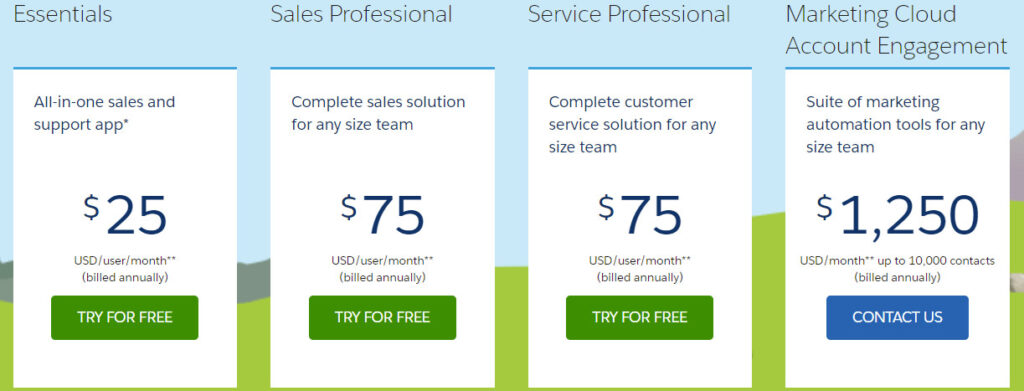SaaS, IaaS, PaaS, DaaS – there are increasingly many forms of delivering as a service. The term XaaS is a term coined to imply “anything as a service”. When you are using terms like “anything as a service”, there must be something rather compelling behind it.
Over the decades, many companies have made the switch from a perpetual (one-time) licensing model to a subscription (recurring) based one. The benefits and drawbacks of these licenses have been the topic of discussion since the introduction of early subscription services, such as Salesforce, widely recognized as the first SaaS, founded in 1999. While software services have held the forefront of subscription licensing, many B2B and B2C companies are quickly migrating over.

XaaS isn’t just a new pricing model, it is quickly becoming the pricing model for B2B and B2Cs
2018, Gartner predicted that by 2020, all new entrants and 80% of historical vendors will offer subscription-based business models, regardless of where the software resides
Forbes reported over a 100% increase in subscription services yearly over 5 years starting in 2016
The key difference between subscription vs. perpetual license is that subscription software is generally paid annually, monthly, or even bi-weekly, while perpetual software is paid up-front as a one-time fee. A contrast to subscription licensing, perpetual (one-time) licensing requires that maintenance fees must be paid, costing roughly 15-30% of the license’s initial cost, typically due yearly.
SUBSCRIPTION | PERPETUAL |
No specific time limit | Term is limited |
Customer takes possession of the software | Customer does not take possession of the software |
Customer responsible for IT environment | Contractor responsible for IT environment |
Customer responsible for software maintenance | Contractor responsible for software maintenance |
There are 4 key benefits of using subscription-based licensing:
Pricing Strategies: XaaS allows more room for flexibility, so you can employ multiple strategies/tiers/packages to test which one works best.
Freemium strategy for acquisition
Tiered pricing aids in driving growth and increasing revenue as several different offerings at scaling price points allow for more targeted solutions
Pricing by usage
Customer Acquisition and Affordability: With the option to provide several pricing strategies, you can ensure that you have an offer that applies to different market segments, and unique price points that match each of their needs. Adjustments to services can be made by each customer’s usage requirements/needs.
Customer Relationship: Well-positioned subscription services are frequently updated based on user feedback, allowing an opportunity to build a much deeper relationship with customers. Once customer needs are known, they can be addressed quickly and effectively.
Constant Growth: The ability to quickly adapt to evolving needs adds value to the core product and will be noticed by customers. Through constantly responding to customer feedback and billing KPIs, growth follows, rather than waiting long cycles for new feature development in a perpetual plan.
Drawbacks of using subscription-based licensing:
Churn Rate: Due to the nature of subscription-based software, the possibility of customers ending their subscription is always present. It is a metric that needs to be tracked and evaluated. If customers terminate early or constantly churn, depending on costs to acquire customers, profitability issues could arise.
Keep in mind that a high churn rate is often a sign of much deeper customer value-based issues.
How to solve customer churn:
Tiered Services: Through value-based pricing, a tiered service strategy can be developed to provide an affordable solution for all target markets, reflecting the perks offered in each tier. This will minimize the churn rate by accurately catering to customers’ budgets and giving them options to downsize their purchases.
Feedback: Consistent feedback is crucial in the development of subscription-based services. Adjusting to the feedback and actively addressing all concerns will aid in minimizing the churn rate.
Transparency: Before upgrades that are reflected in price increases, full transparency with customers will provide them a sense of security. Letting subscribers know any price changes will allow ample time to decide to either: continue their subscription, choose a more affordable plan, or request to not implement any upgrades on their plan.
Final Thoughts:
XaaS may seem like it is just for technology-enabled companies, but this is not true. All industries have the potential for growth through subscriptions it just requires a detailed understanding of customer needs and ensuring this is reflected in your pricing offers. Our team at Revenue Management Lab can help you successfully transition to XaaS and capitalize on the benefits that one-time purchases lack.
ABOUT THE AUTHOR Michael Stanisz is a Partner at Revenue Management Labs. Revenue Management Labs help companies develop and execute practical solutions to maximize long-term revenue and profitability. Connect with Michael at mstanisz@revenueml.com




